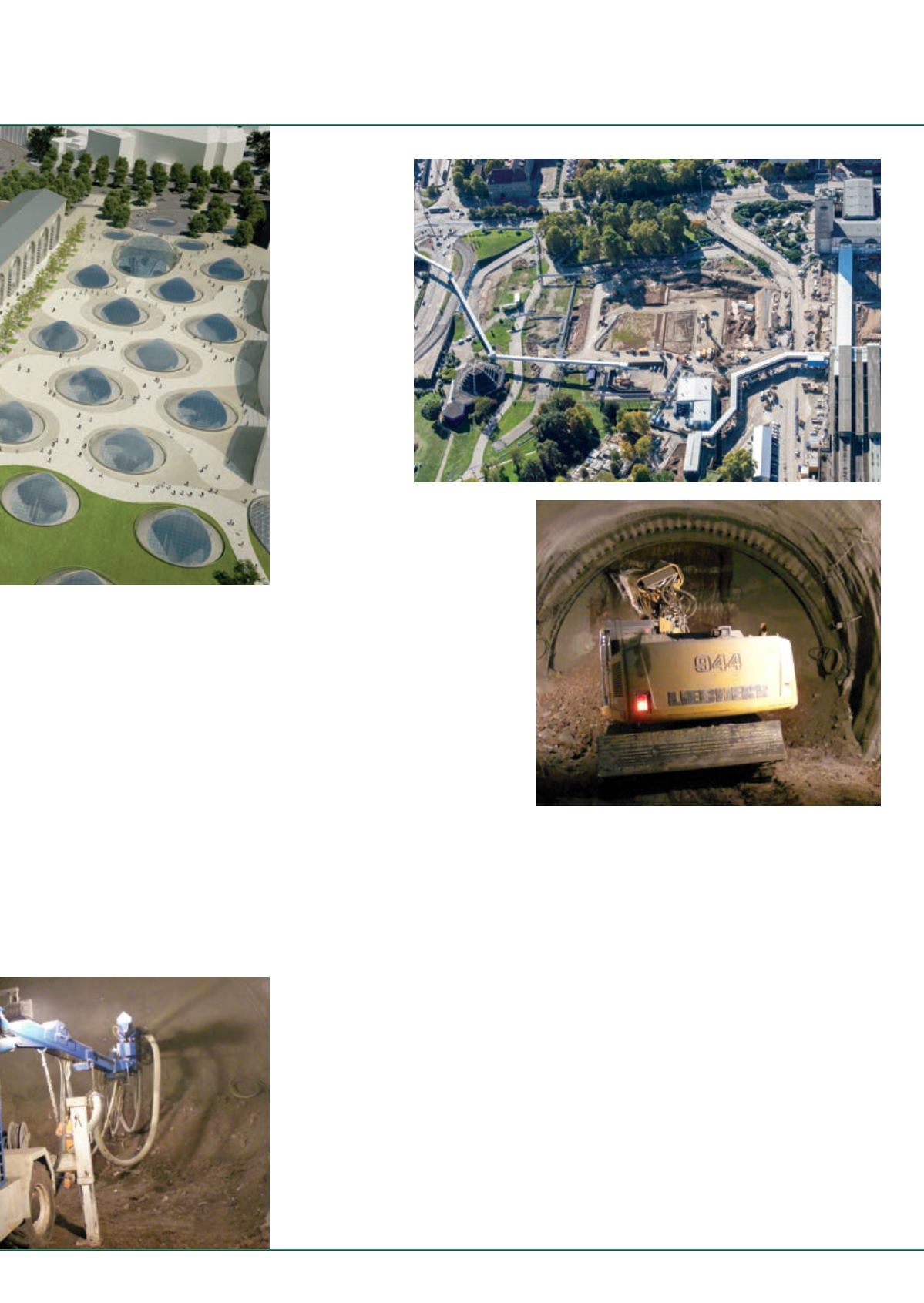
15
december 2014
international
construction
SITEREPORT
Stuttgart 21
mechanical excavation for its sections of
the project. A spokesman for the group
said the relatively short runs andchanging
cross sections meant tunnel boring
machines (TBMs)werenot suitable,while
the soft ground and urban environment
didnot point todrill&blast techniques either.
The consortium’s chosen workhorses on project are 44 tonne
Liebherr R 944 C Tunnel excavators. The front end of the
machines comprise a swivelling arm with double 45° bearings
and a 4.5 m telescopic boom and 3.07 m arm. The ground is
soft enough to be excavated with a bucket, but the excavators
have high-flowhydraulics available to power attachments such as
breakers or cutters, if required.
In fact the consortium owns three such machines as well as a
24 tonne R 924 Compact Tunnel excavator. For mucking-out
work, keymachines include threeLiebherrL556Tunnelwheeled
loaders and a larger L566Tunnelmachine.
The tunnelling techniques being used follow the general
principles of the New Austrian Tunnelling Method (NATM),
with a combination of shotcrete, steel mesh and some rock
bolting and steel arches being used to stabilise the sides and face.
In the ‘Simone’ tunnel under Stuttgart’s Bad Cannstatt district,
which
iC
visited, thesemethods were achieving progress of some
2.5mper day, with teamsworking 24/7on the project.
Another complication in central Stuttgart is how to cope with
all the spoil generated from the excavations? Trucks would be
problematic in a city which already has
traffic issues, and the environmental
impact would be high due to the long
haulage distances. To mitigate against
this, some areas of the project have been
equipped with an elaborate system of
overhead conveyors, which removes
excavated material without putting more
vehicles on the roads.
Wider scheme
Outsideof thenewurban rail connections
there are still plenty of construction
challenges, partly dictated by Stuttgart’s
geography. The city sits in a bowl carved
by theNeckarRiver,with themain station
sitting at some 230 m above sea level. Building the high-speed
line out to the east will involve the construction of the 9.5 km
Fildertunnel, whichwill take the line to amaximum elevation of
392m, some162m above the city.Groundbreakingon this took
place in July, and upon completion it will be the longest double
tube rail tunnel inGermany.
In fact, of the59.6kmof new trackbeingbuilt for theStuttgart
toUlmhigh-speed stretch, some 30.4 kmwill be in tunnels, and
there will be five such structures 500 m longer or more. Other
significant elements of the scheme include 17 elevated overpasses
and an additional 20 roadbridges.
Benefits
The scheme has not been without its controversies. Indeed, the
wranglesover fundingandalternative schemes, alongwithvarious
objections, took a good 30 years to resolve between project
conception in the early 1980s and ground breaking in 2010.
However,Bahnprojekt Stuttgart-Ulm is keen to stress thebenefits
it will bring, with greater capacity at Stuttgart station, more
destinations for travellers, better connectivitywith the airport and
shorter travel times betweenmajor destinations.
iC
Aerial view
of the central
station area,
with the existing
building top-right.
Covered conveyor
belts have been
installed to
remove excavated
material.
Mechanical excavation using specialised Liebherr Tunnel
excavators is favoured by the ARGE Tunnel Cannstatt
consortium for its city-centre contracts.
Shotcreting to
stabilise the
tunnel walls prior
to excavation of
the heading.


